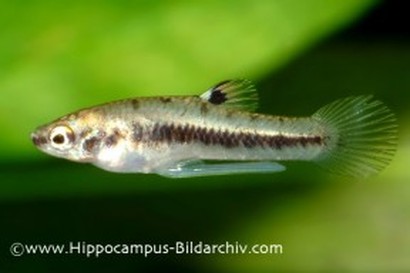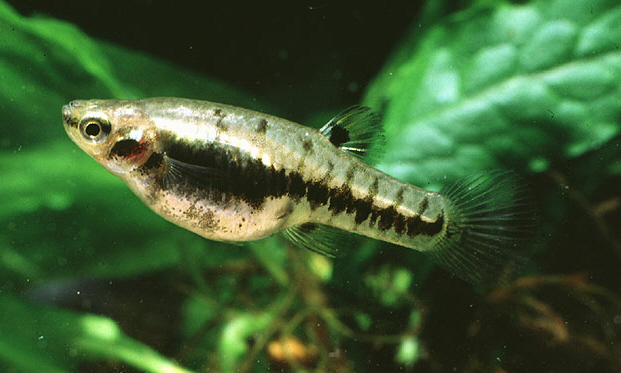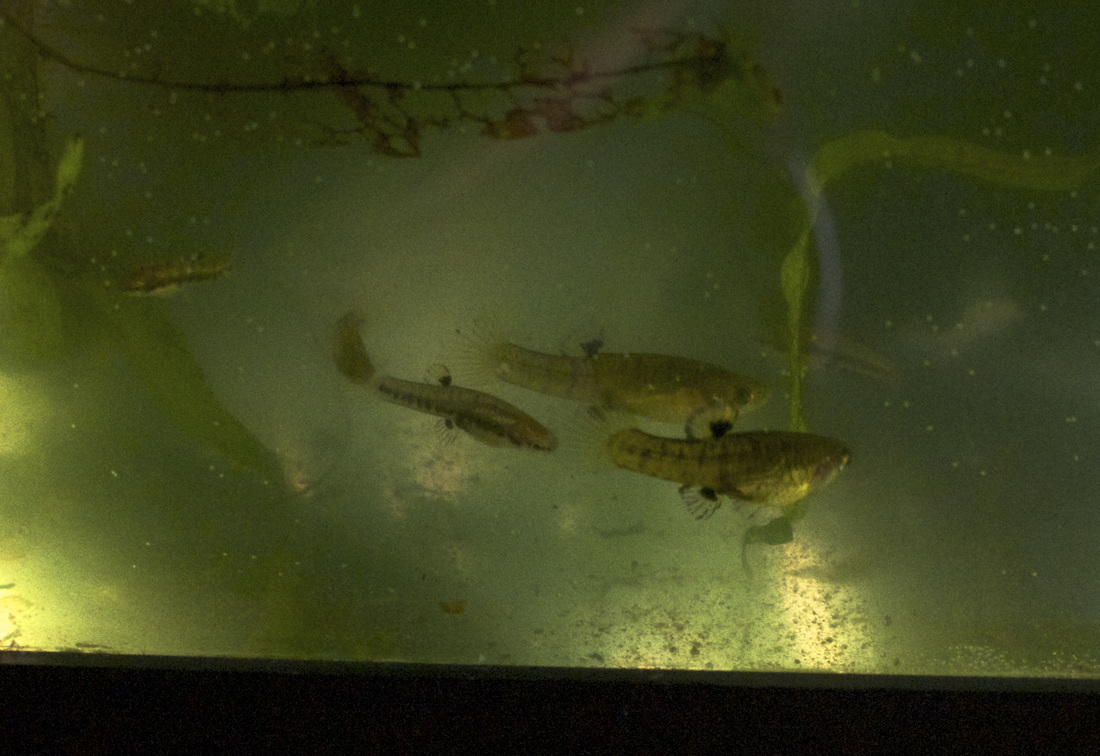Heterandria formosa
I love this little species! I obtained my small colony from the wonderful H. Mack at the San Francisco Bay Area Killifish Society in May, and they have since flourished in a one gallon jar of green water on my windowsill. They, along with the Elassoma, are by far the easiest species that I maintain. From a small colony of 5, I am not up past a dozen at least!
And when I say little, I mean LITTLE. Heterandria formosa is the 7th smallest fish in the world, and is the smallest livebearer. The males barely top out at 2cm, the females slightly larger. H. formosa are a United States native with a range from the Cape Fear River drainage in North Carolina to southern Louisiana . I am not sure what locality mine are from though. They are so tiny that the females perform superfoetation, where the females have kind of a conveyor belt of different embryos and then pop one out every day.
And when I say little, I mean LITTLE. Heterandria formosa is the 7th smallest fish in the world, and is the smallest livebearer. The males barely top out at 2cm, the females slightly larger. H. formosa are a United States native with a range from the Cape Fear River drainage in North Carolina to southern Louisiana . I am not sure what locality mine are from though. They are so tiny that the females perform superfoetation, where the females have kind of a conveyor belt of different embryos and then pop one out every day.
|
One hilarious thing is that it is quite easy to tell who is male or female by the ridiculous size of the gonadopodium on the male. In fact, the modified penis is nearly the length of the diminutive male's body! And when they spar, they are literally sword fighting!
The females also spar for new territory, and there is a lot of body slapping and occasionally some gentle nipping. I have never had any real damage occur. When males attempt to fertilize a female, they somewhat furtively follow around the female (who is easily 3 times their size!) and dart in when they think she isn't looking. Hit females have a prominent gravid spot, and release rather large fry fairly frequently. The adults don't appear to cannibalize their fry. H. formosa are incredibly friendly and beg actively for food when you come close to the tank. They are wonderful little creatures! |
Oh no! Ick!
While out for vacation over the weekend (my birthday in Las Vegas actually, hehehe) I accdientally left the window to the fish room open. My H. formosa are right next to the window and they got the brunt of the cold. I came home to icky fish! However, heat, salt, and water changes cleared it up in about 24 hours.
Community tanks with Elassoma?
Recently I have decided to try co-habitating H. formosa with my pygmy sunfish, since there are areas within their endemic populations where these two overlap. They are housed in a 2.5 gallon tank near the windowsill with no heat or filtration. The two species have very little direct interaction, even though Elassoma can be extremely aggressive towards their own kind. The very friendly H. formosa do influence the usually shy and reserved Elassoma to come out of hiding more often. However, I find that adult Elassoma predate on H. formosa fry, and vice versa. Therefore, community tanks with the two species are great for holding adults, but if you want fry to survive, you must have species tanks.



